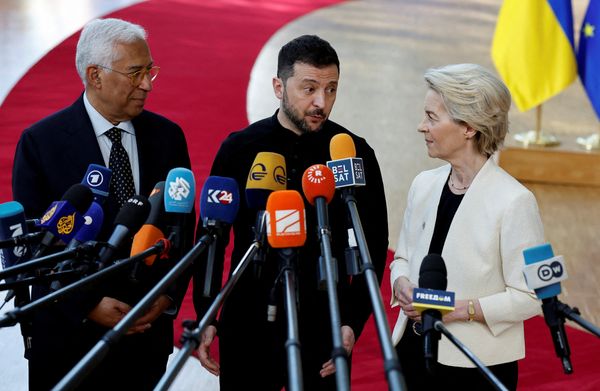
The screaming starts just as the aircraft hits the runway. And then the sparks start flying.
“Holy shit!” one passenger exclaims in a video clip of the incident. “What the fuck? There’s sparks outside! What the fuck? Why is there sparks outside?”
DON'T MISS: American Airlines has a terrible secret policy you need to know
The terrifying incident occurred on Aug. 20 as Alaska Airlines (ALK) -) Flight 1288 made a hard landing at John Wayne Airport in Santa Ana, California during Tropical Storm Hilary.
The plane was traveling from Seattle with 106 passengers and six crew members.
Major damage received by the 2008 built Alaska Airlines Boeing 737-800 aircraft (N516AS) due to heavy landing on runway 20R at Santa Ana John Wayne Airport, (SNA/KSNA), United States, amid hilary hurricane.
— FL360aero (@fl360aero) August 21, 2023
Flight AS1288 came to a rest on the taxiway. No injuries reported yet. pic.twitter.com/CEkJDgWf5E
Upon landing, the aircraft appears to hit the ground and drags its left wing down the short tarmac, according to the video clip, and bright sparks can be seen flaring up outside a passenger window.
"Why are we going so fast?" a passenger asks prior to landing. "Why is he turning?"
Alaska Airline said in a statement that the aircraft "experienced an issue" soon after safely landing at 11:15 p.m. local time. No one was injured.
"The aircraft was unable to taxi to the gate due to an issue with its landing gear," the airline said in a statement. "The aircraft parked on a taxiway and everyone exited the aircraft safely. They were then taken by bus to the terminal."
The company said that its maintenance and safety teams are inspecting the aircraft.
"While this incident is a rare occurrence, our flight crews train extensively to safely manage through many scenarios," Alaska Airlines said.
Fire department responds
Photographs taken by the Orange County Fire Authority, which responded to the incident, show the off-kilter plane with the left engine resting on the runway.
“Last night amid the rain and wind our crews were called to John Wayne Airport when a 737 experienced an issue while taxiing to the gate after landing,” the authority said on a Facebook post. “Fortunately, no one was injured. They were however stranded. Firefighters worked with airport staff and the pilots to safely get everyone off the plane.”
Other photos posted to X, the platform formerly known as Twitter, show some of the damage sustained by the left wing.
The Federal Aviation Administration did not immediately respond to a request for comment.
At the time of the landing the weather overhead was overcast and rainy, NPR reported, and the entire region was experiencing its first tropical storm in 84 years. According to the National Weather Service winds were gusting up to 30 mph.
Once hurricane strength off the coast of Mexico's Baja California peninsula, the storm was downgraded to a post-tropical cyclone as it moved over the North American mainland, Reuters reported.
Remnants of Hilary were expected to dump heavy rains in Nevada and Utah and into the Northwest.
Other airline incidents
Earlier this month, tires on a Delta (DAL) -) Boeing 757 caught fire and burst into flames while landing, resulting in the evacuation of 190 passengers on to an Atlanta airport tarmac.
At the time, Delta said that initial reports indicated that one of the aircraft’s tires blew upon landing and components of the landing gear were hot. Passengers were evacuated via emergency slides. One person was reported injured in the incident.
Last month an Alaska Airlines flight from Atlanta to Seattle was forced to make an emergency landing after one of the passengers handed a flight attendant a note saying that he had "several pounds of homemade explosives" in his carry-on bag.
Meanwhile, The New York Times reported on Aug. 21 that airline close calls are happening far more often than previously known.
So far this year, close calls involving commercial airlines have been happening, on average, multiple times a week, according to a Times analysis of internal F.A.A. records, federal safety reports and interviews with more than 50 current and former pilots, air traffic controllers and federal officials.
The incidents often occur at or near airports and are the result of human error, the agency’s internal records show. Mistakes by air traffic controllers — stretched thin by a nationwide staffing shortage — have been one major factor.
The close calls have involved all major U.S. airlines and have happened nationwide, the Times reported.
Get investment guidance from trusted portfolio managers without the management fees. Sign up for Action Alerts PLUS now.







